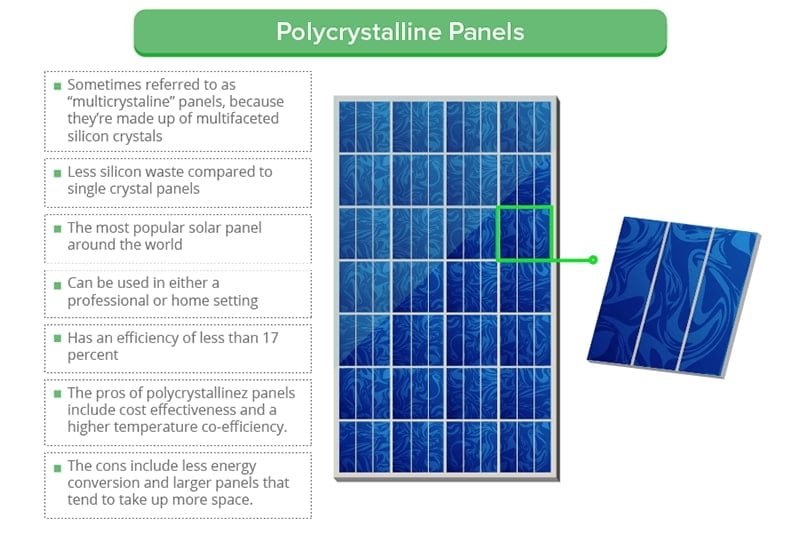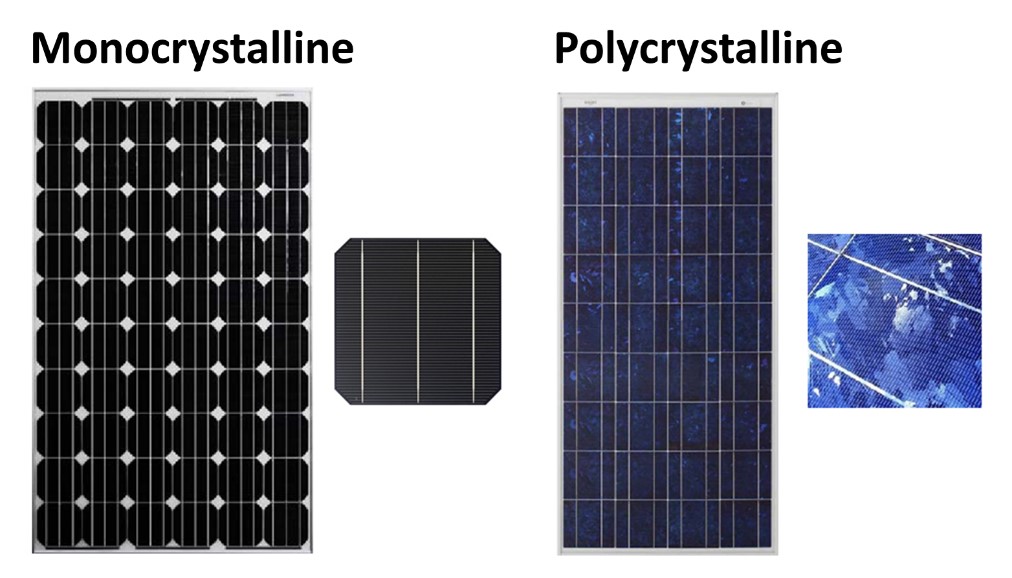Up until a few years ago most solar panels were monocrystalline but in the last three years polycrystalline solar panels have overtaken them as the most commonly used panel.
Why polycrystalline solar panels are maximum used in the world.
Conclusion after reading such a comprehensive monocrystalline vs.
About polycrystalline solar panel.
The temperature is an essential factor to consider before acquiring a solar panel.
The solar cells within monocrystalline panels are a single flat black color which makes them popular among homeowners.
Use our best solar panel buying guide to find the right solar panel for you.
In addition polycrystalline solar panels tend to have a blue hue instead of the black hue of monocrystalline panels.
Polycrystalline solar panel are also known as poly solar panel multi crystalline or many crystal silicon panel.
There are several types of photovoltaic solar panels on the market for domestic use.
To make the cells of polycrystalline panel fragments of silicon are melted together to form the wafers.
Polycrystalline solar panels generally have lower efficiencies than monocrystalline options but their advantage is a lower price point.
Polycrystalline solar panels are also made from silicon.
The majority of solar panels deployed today are made from either monocrystalline or polycrystalline solar cells.
The moderate acceptable range is 40 f 40 c for the minimum temperature and up to 185 f 85 c and higher as maximum temperature.
Because there are many crystals in each cell.
Monocrystalline solar panels are the most popular solar panels used in rooftop solar installations today.
Therefore every polycrystalline solar panel usually has a minimum and maximum temperature range.
Polycrystalline solar panels are getting their due.
They were thought of as inferior and not able to attain the efficiency of monocrystalline solar panels.
Monocrystalline panels are more power efficient than the polycrystalline ones due to their structural difference.
The most common types are.
Scheme of solar panels connected in series.
There is a third type of solar technology called thin film panels which are usually deployed for large scale utility projects and some specialty applications.
This makes monocrystalline solar panels suitable for places where there is a space crunch and more.
Polycrystalline comparison one can easily differentiate between the types of solar cells and their efficiency.
Let s consider the depicted below solar panels designated for a 12v solar panel system operating at their maximum power point while delivering the depicted voltage and current that correspond to this power tracking point.
For instance a polycrystalline 100 watt solar panel can give you efficiency at the rate of 17 maximum while its monocrystalline counterpart at the same rating can deliver up to 19.
The latter is only valid provided that the panels connected are of the same type and power rating.




























